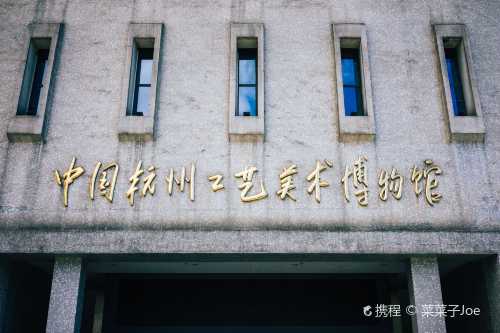Popular Trip Moments
Spring in Hangzhou: An Encounter with Peach Blossoms and Ancient Charm | Hangzhou's Little Jiuzhai—Comprehensive Guide to Daqishan National Forest Park | Valley of the Winds | Outdoor Challenger Adrenaline Station | Open the window to see the mountains – I could live in this homestay forever | Spring in West Lake is like stepping into a fairytale world filled with peach blossoms. | Fuchun Mountains & Waters Secret Realm: A Poetic and Picturesque Journey Through Time | Hangzhou May Day Travel Guide | Relaxed Family Outing in Liangzhu for May Day | West Lake Spring Tour | The Romance of Monet's Garden, This Photo Guide is Breathtakingly Beautiful! | Hangzhou's trendsetters' new favorite! This Korean restaurant is so fun~ | In Hangzhou, I've met my food buddies at this late-night food stall 567 times! | Anlan's May Day Escape Plan | Stay in an art gallery in the clouds at the Hangzhou Binjiang Baolong Artel Hotel! | The top choice for a family trip during the Labor Day holiday! Minghao Family Feast | Highly recommended: Visit these places before leaving Hangzhou | One-year anniversary hotel getaway | Xiaohe Zhijie Street Recommended Places to Visit | Limited-time romance in Hangzhou: Enter Monet's rose oil painting world for free. | Top azalea destination in Hangzhou, rush over for free photoshoots. | Hangzhou's top attraction, Monet's Rose Garden for free. | A private spot for Hangzhou locals: A free trip to a dreamy azalea wonderland. | Hangzhou Jiutai Hotel: A Cozy Haven with Ancient Charm in Hangzhou | White Lady's must-visit attractions are here! | Venture into Hangzhou's Monet Garden and encounter a sea of irises. | "Hidden Gem of Lin'an | Poxin Yuanshe, a Dreamlike Paradise Nestled in the Mountains" | 2. Follow the poetry and explore Hangzhou. This hotel has captured the romance of West Lake. | Stay in a Poetic Retreat by West Lake | Hangzhou Xianting Inn is Perfect for the May Day Holiday | Discover Hangzhou Narada Resort & Spa, unlocking a one-stop dreamy vacation experience | Enjoy a Slow-Paced Lakeside Getaway at Qiandao Lake Cloud Mansion! | Hangzhou Getaway | A Hidden Paradise in the Mountains
Popular Travel Types
Recommended Attractions at Popular Destinations
Bangkok attraction near me | Manila attraction near me | Tokyo attraction near me | Taipei attraction near me | Hong Kong attraction near me | Seoul attraction near me | Kuala Lumpur attraction near me | Los Angeles attraction near me | Shanghai attraction near me | New York attraction near me | Shenzhen attraction near me | Osaka attraction near me | Singapore attraction near me | London attraction near me | Guangzhou attraction near me | San Francisco attraction near me | Beijing attraction near me | Macau attraction near me | Bali attraction near me | Jakarta attraction near me | Paris attraction near me | Ho Chi Minh City attraction near me | Istanbul attraction near me | Phuket attraction near me | Chicago attraction near me | Seattle attraction near me | Toronto attraction near me | Orlando attraction near me | Cebu attraction near me | Chiang Mai attraction near me
Popular Restaurants in Hangzhou
JIN SHA | 28 HUBIN ROAD | GUIYU RESTAURANT | Jiexianglou Restaurant | 美在江南·臻宴·匠心江浙菜(黄龙店) | WL BISTRO | YUE | LI'AN | HANGZHOU RESTAURANT | Dining Room | Man Shu Kaiseki | Charencun Tea House | Ambré Ciel | 杭州滨江银泰喜来登大酒店·采悦轩中餐厅 | La Villa Restaurant | JIANG ZHE HUI CHINESE CUISINE | Wild Yeast | NongTang Li (LongJing) | Fang Lao Da | 1913 Restaurant @ The New Hotel | Xinbailu Restaurant (hubinyintai in77C qu) | 杭州中科久泰饭店·久泰阁 | XIAN •RESTAURANT | Hangzhou House | Sheng yan biao zhi Restaurant | ALOR VALLEY | XINZHOUJI | XI XI XI LAI DENG | WATERLIGHT COURT | 杭州如野民宿(西湖风景区太子湾公园店)·如野·玻璃房子·山野食记(西湖龙井虎跑店)
Popular Ranked Lists
Popular Best Things to Do in Nan'ao | Top 5 Local Restaurants in Jingxi | Popular Premium Hotels in Tuscaloosa | Top 6 Best Things to Do in Hinggan League | Top 9 Local Restaurants in Hengshui | Top 10 Local Restaurants in Taichung | Top 10 Local Restaurants in Qionghai | Top 10 Local Restaurants in Yushan | Popular Premium Hotels in Bydgoszcz | Popular Premium Hotels in Edmonton | Popular Best Things to Do in Zhongxiang | Popular Best Things to Do in Jixi | Top 10 Best Things to Do in Rongcheng | Top 3 Local Restaurants in Tongling | Popular Premium Hotels in San Pedro Sula | Top 10 Local Restaurants in Dengfeng | Popular Best Things to Do in Loudi | Top 10 Local Restaurants in Kaohsiung | Popular Luxury Hotels in Mirbat | Top 3 Premium Hotels in Cheltenham | Top 4 Local Restaurants in Huludao | Top 10 Local Restaurants in Golmud | Top 8 Best Things to Do in Baishan | Top 10 Local Restaurants in Lingchuan | Popular Luxury Hotels Near East Brunswick | Top 4 Best Things to Do in Zhaotong | Popular Luxury Hotels Near Takeo | Popular Best Things to Do in Suifenhe | Top 10 Local Restaurants in Xiangtan | Popular Premium Hotels in Agrinion
Payment Methods
Our Partners
Copyright © 2025 Trip.com Travel Singapore Pte. Ltd. All rights reserved
Site Operator: Trip.com Travel Singapore Pte. Ltd.
Site Operator: Trip.com Travel Singapore Pte. Ltd.




























